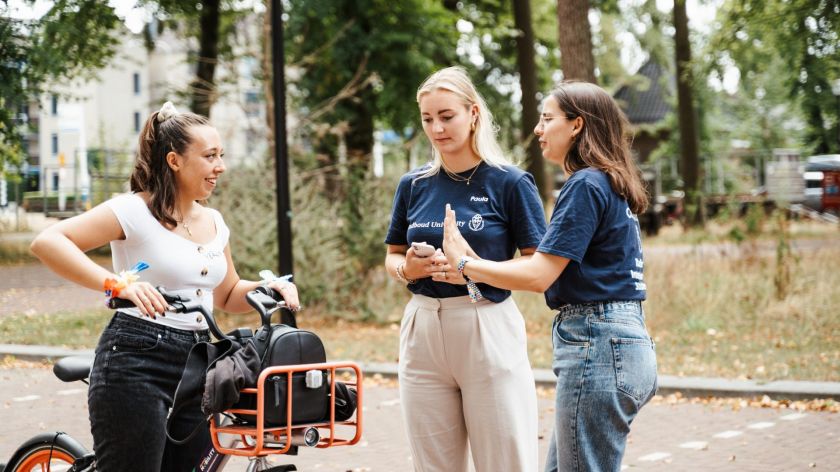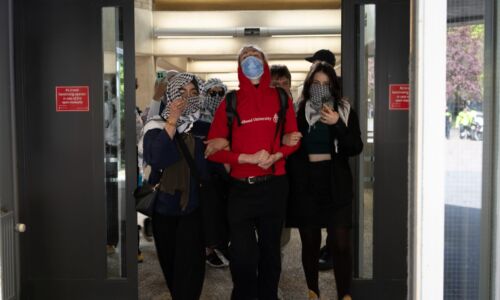International student on bike more likely to be in a crash
-
 Internationale studenten krijgen fietsles tijdens de introductie. Foto: Johannes Fiebig
Internationale studenten krijgen fietsles tijdens de introductie. Foto: Johannes Fiebig
They love cycling, but also tend to be accident-prone. Internationals have more accidents and near accidents than Dutch students, according to research by TeamAlert.
At first sight, they appear to follow traffic rules much better than Dutch students. They are less likely to run a red light or cycle on the pavement, use their bike lights more frequently and are less likely to cycle after drinking alcohol. At least, that is what international students say themselves.
Yet they are more than twice as accident-prone as Dutch students, according to a survey by TeamAlert, an organisation which aims to reduce road deaths among young people. The study (in Dutch) comparing the cycling habits of domestic and international students was conducted a few months ago, but it was only released today.
Eleven versus four
Roughly 1,500 students (slightly more internationals than Dutch) filled out an online survey regarding their cycling habits. The velocipede is popular among international students, with seventy percent using it on a daily basis. This contrasts with the practice in their home country, where only six percent of internationals report using a bicycle daily.
Cycling lessons
At Radboud University, new international students have been receiving cycling lessons for several years now. In 2019, Vox made this video about it.
That lack of experience becomes a challenge in the often crowded Dutch student cities. Eleven percent of internationals were involved in an accident in the past month, compared to four percent of Dutch respondents.
Experience makes all the difference
Internationals are not entirely confident about their own cycling proficiency and their knowledge of both formal and informal road rules. On top of that, they find Dutch roads quite chaotic. Cycling is akin to being offered something you’ve wanted so much and then having to battle past twelve older brothers to reach it, one international explained.
TeamAlert’s findings are in line with previous research by the University of Groningen. There too, cycling international students reported more accidents than Dutch cyclists. But they also made more errors in traffic, the researchers observed. For example, they drove on the wrong side of the road or took the roundabout the wrong way round.



